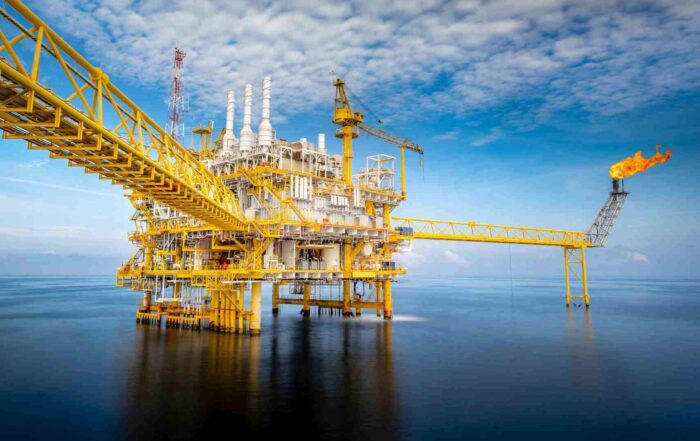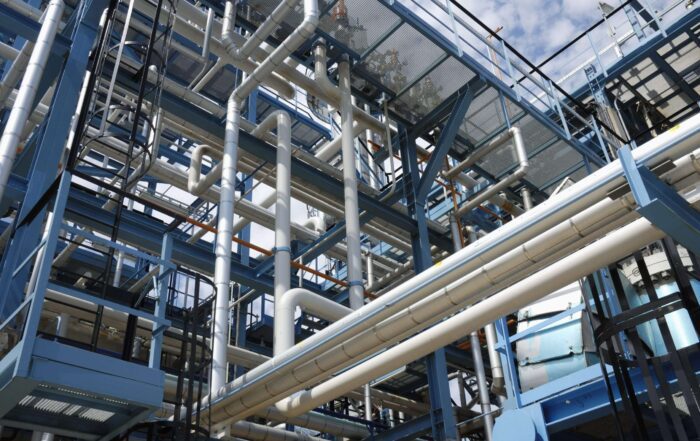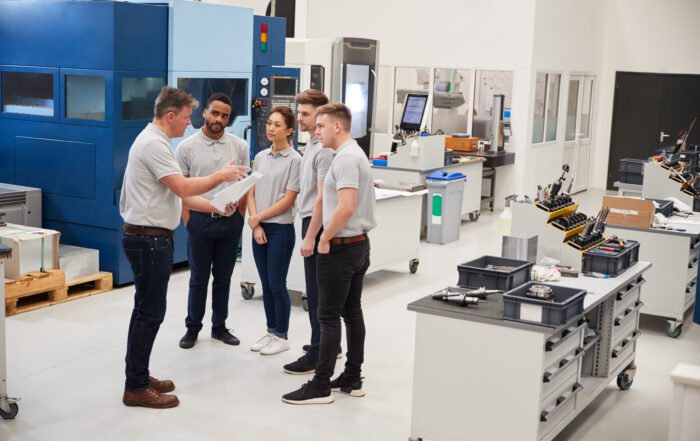Many asset heavy companies still have a siloed structure in which departments such as Maintenance and Operations (or: Production) have their separate goals and KPIs. In the Asset Improvement Mappings (AIM), our APM assessments, we always flag this as an opportunity for improvement because realizing a sustainable partnership between departments is an important success factor to improve production output, minimize Total Cost of Ownership and accelerate Digital Transformation.
Determine and embrace a common goal
When working towards a common objective, a multidisciplinary team can more easily scope improvement potential and detect bottlenecks sooner (without addressing blame to one department). Although departments have different perspectives and other responsibilities, it will promote transparency and, therefore, true collaboration. The departments (or silos) have to understand that they need each other and that everyone will want the best result for the whole site.
Everything the maintenance department does is to enable production to create as many products of high quality as the customers want. This is where you can find the common ground; good installation performance means good production whereas no production (i.e. bad installation performance) leads to dissatisfied customers. Embracing the common goal can be vital to organizational success.
A favorite KPI to use to this end is Overall Equipment Effectiveness (OEE). The percentage is measured by multiplying availability, performance and quality. All of those OEE parameters are influenced by both Maintenance and Operations with Maintenance focusing on realizing maximum asset availability and reliability and Operations aiming to achieve the best production quality and highest reliability. In other words, the overlapping focus of OEE makes it a good KPI for a joint improvement goal.
Set up and use a shared KPI dashboard
Once a common objective has been determined together, the KPIs to measure its success will follow. A shared KPI dashboard can be a great tool to collaborate in. It offers full transparency with standardized insights and preferably includes realistic (internal) benchmarks. One thing to keep in mind is that one condition for success for a shared KPI dashboard is that data from IT and OT systems are connected. While this can be a big task, it is highly recommended to put in the work. This does not only benefit your current situation but is also paramount to accelerating your Digital Transformation as connected data and systems are part of the building blocks to implement or boost the digitalization of your Asset Performance Management.
The KPIs to include in a collective dashboard depends on the shared goal. Some examples that are used in successful companies:
Succes story: Shared BI Platform Increases Efficiency with 26%
An Oil and Gas operator wanted to connect maintenance and operations data from several systems and sources to give end users actionable insights and improve efficiency. The business intelligence (BI) tool that was developed, connected live data from the Enterprise Asset Management (EAM) system, Condition Monitoring system, production information and wells data and more. The BI tool delivers automated dashboards and business insights. This new way of working was estimated to save 26% man-hours and extended the line of sight for maintaining Safety Critical Assets from one week to six months. Download the case and read more.
Define and implement a clear process
The common KPI dashboard promotes working in one process that both Maintenance and Operations participate in. If you haven’t done so yet, use a risk-based approach to determine the criticality of the equipment; this is not done by Maintenance alone, all disciplines and job levels should be involved. We advise to set up weekly KPI meetings which determine the improvement potential based on the KPI dashboard. Example: if the dashboard shows that several equipment types have unacceptable production loss due to failure the next step can be a joint Root Cause Analysis (first tackling the prioritized equipment of course). After that everyone’s part to solve the issue should be defined before getting the job done. In many successful partnerships between Maintenance and Operations we also see that short daily check ins, in which everyone reports their progress, help to stay on track.
Nurture adoption of the new way of working
The key to success for a productive collaboration is getting your people to embrace the change/common goals. This holistic way of working asks for a big mindset shift which needs to be patiently nurtured in order for the workforce come out of their siloed shells and adopt it. First of all, management needs to show active leadership and embrace the partnership and process. Make it part of people’s purpose and remit; How does someone’s job contribute to realizing the KPIs? Let them experience ownership and have this promoted by managers. Secondly, put in the work to get internal acceptance. Develop and roll out a solid communications strategy to inform everyone directly and indirectly involved in the company. Train everyone directly involved and regularly check in to keep knowledge fresh. Share best practices and celebrate success together.
Succes story: Global EAM system roll out with quick ROI for Vanderlande
One company that benefited from this holistic way of working is Vanderlande. They paid a lot of attention to their people and culture when rolling out a new EAM system on a global scale. Due to realizing internal adoption quickly the Return on Investment of the project was high. Job satisfaction also increased as people indicated that the new process made their work less complex with less problems occurring. Download and read the case study here.
Conclusion: Improve the Ability to Perform
Starting with connected data and systems and tools such as KPI dashboards to process improvements and internal adoption of the new roles, responsibilities and way of working; all of the discussed changes improve your Ability to Perform (better) through a holistic approach to asset performance. Changing to a united way of working for Maintenance and Production takes a big organizational change but can also improve asset performance. This can minimize Total Cost of Ownership while also realizing a higher job satisfaction among your workforce.
📊 Download free eBook on improving asset performance
📰 Continue Reading
- Whitepaper: How to Drive Performance with Asset Management
- Checklist: Overall Equipment Effectiveness cheat sheet
- Chemical plant realizes maintenance maturity growth with Asset Improvement Program
- Global Enterprise Asset Management System rollout for Vanderlande
- Asset Management: 7 Steps to Performance Improvement
Get inspired
Cenosco and MaxGrip announce a strategic partnership to enhance asset integrity management, combining Cenosco's software expertise with MaxGrip's consultancy in Asset Performance Management, aiming to optimize operations and improve client outcomes.
Discussion of the benefits of RCA including best practices.
Middle managers are the driving force for effective change. We list three essential ingredients.




